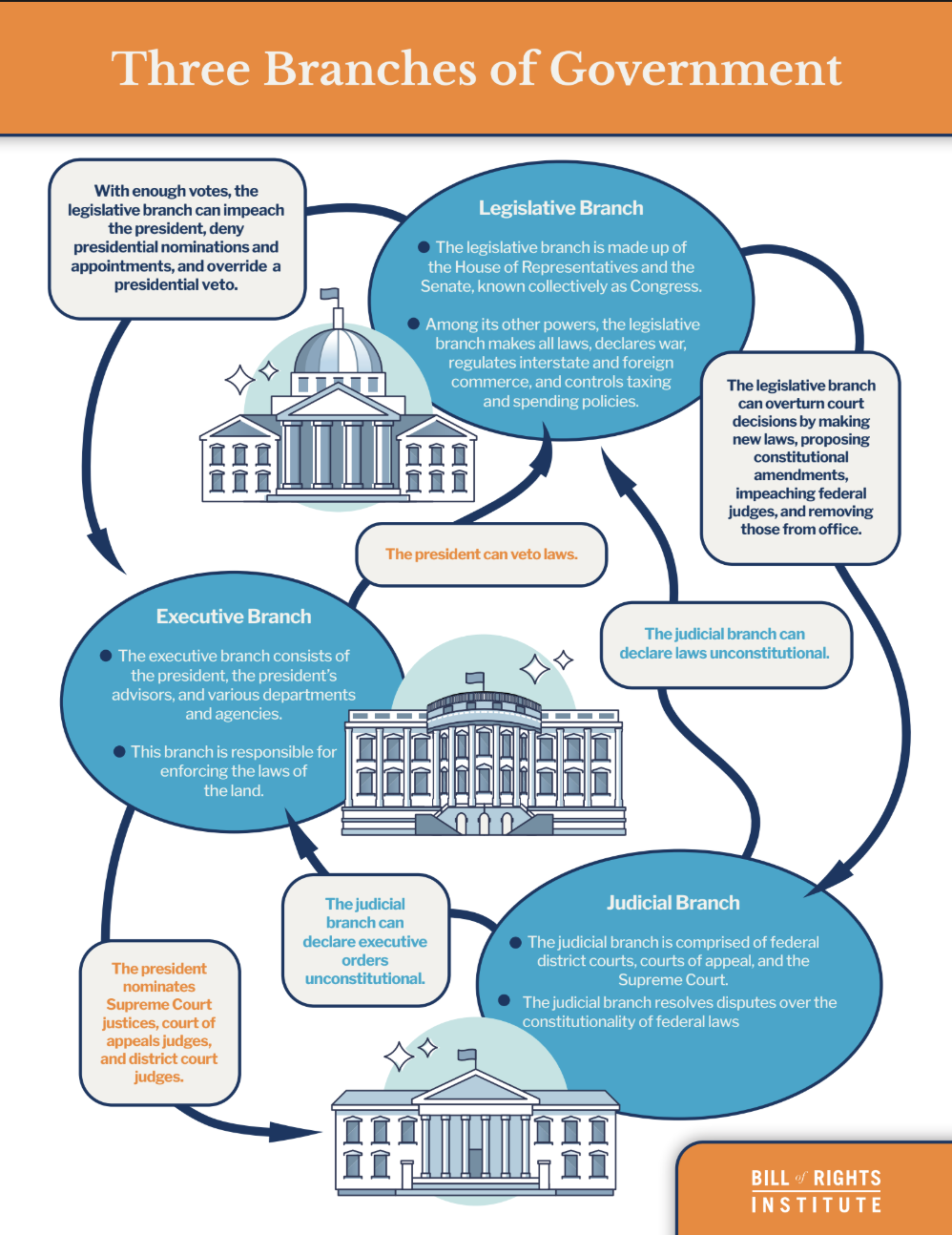The Constitutional System of Government
The Constitutional System of Government
Adapted From: Separation of Powers Essay – Government and Politics: Civics for the American Experiment
- Lexile: 1070
- Word Count: 479
- Vocabulary: tranquility, wrongdoing, divided, executive, insure, independently, diplomat, two-thirds, delegate, outline
When the delegates got together at the Constitutional Convention to make changes to the Articles, they understood they had to give more power to the national government. However, this would make the government a bigger threat to people’s freedom. The need to limit the power of a stronger national government led the delegates to focus on how to divide power between the different parts of government. Both the Virginia Plan and New Jersey Plan suggested creating three separate parts of government that would work independently. The delegates spent four months setting up these three parts and deciding how they would work together. They wanted to make sure each part could work on its own but also wanted to create a system of checks and balances, so no single part could become too powerful.
The Constitution of the United States outlined a national government consisting of three branches, the Legislative, Executive, and Judicial. Each branch is delegated different responsibilities that together work to, “establish justice, insure domestic tranquility, provide for the common defense, promote the general welfare, and secure the blessings of liberty”.
The Legislative Branch makes laws. It has two parts: the Senate and the House of Representatives. The Executive Branch carries out the laws. The president leads this branch, acts as the country’s top diplomat, and is the commander of the military. The Judicial Branch interprets the laws. It includes the Supreme Court, District Courts, and Courts of Appeals. Congress can create other courts if needed. Any powers not given to the national government belong to the states.
During the debate over whether to accept the Constitution, both the Federalists and Anti-Federalists agreed that dividing power was important. But the Anti-Federalists wanted this division to be much stricter than the Federalists did. The Anti-Federalists were worried that the president and the executive branch would become too powerful and rule for their own benefit, just like the British king and his ministers had done.
The U.S. Constitution includes many ways to divide power. For example, Congress makes laws, but the president can either sign them into law or reject, or veto, them. If the president rejects a law, Congress can still pass it if two-thirds of them vote for it. The president chooses Supreme Court justices, but the Senate must approve them. The president can make treaties with other countries, but the Senate must approve these too. The House can accuse the president of wrongdoing, or impeach him, and the Senate can hold a trial to remove him from office. The Chief Justice of the Supreme Court serves as a judge to oversee the trial proceedings.
This system of divided power in the Constitution protects each of the three parts of government. At the same time, the Founders put in many checks to make sure no one part could abuse its power. This system of checks and balances creates a natural tension between the different parts of government, which is a key feature of American government.
